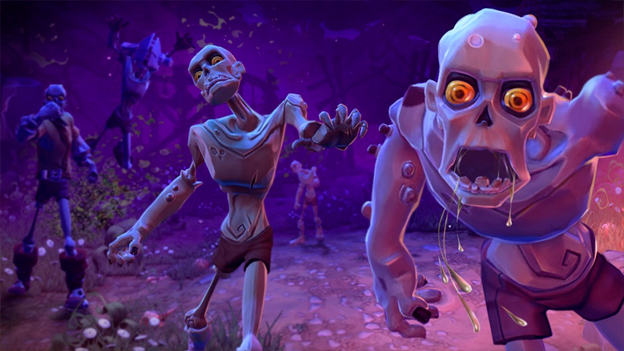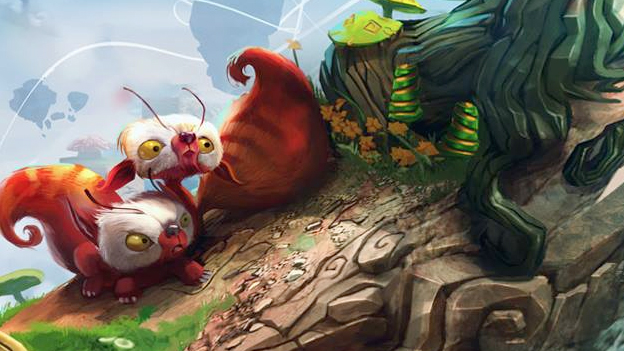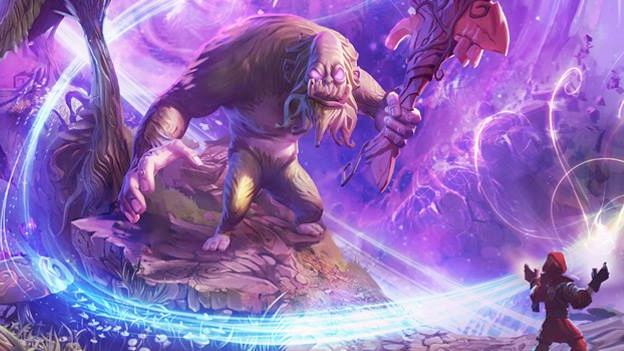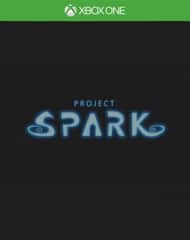Make Your Dream Game
Project Spark is nothing if not massive and powerful. This game creation suite really does give you tools to make just about anything you could possibly imagine. The only limit is your imagination… and you’re willing to put up with grinding and microtransactions.
Project Spark is, essentially, Microsoft’s answer to LittleBigPlanet , though infinitely more complicated. Whereas LittleBigPlanet offers you a limited selection of mostly platform game pieces that you can finagle into other game types, Project Spark is literally and specifically designed to give you maximum control over a game environment without requiring you to know coding. You can basically change and edit anything, from the map itself, to the items you find, to the way characters and enemies behave, to what happens when you press a button or combination of buttons, to where the camera is, and so forth. This allows you to make action games, RPGs, RTSs, fighting games, shooters, and more.
Editing the map is basically done with a pseudo paint interface. You can move a cursor around in 3D space and that cursor will build terrain as you choose. You can simply paint it into space, stretch it, dig into it, pull it up, and more. You can make your cursor bigger or smaller, allowing you to get down to minute details and sculpt the perfect cliff faces or sci-fi hallways. You can paint on textures and blend them with other textures. You can also put down items and objects, from trees to doors to fires and more. This is all actually very simple and, while it can be time consuming (especially if you are sculpting the perfect platforming puzzle), and the controller is much better swapped out for the keyboard and mouse of the PC version, it’s a whole lot of fun and will make you feel like you are truly and honestly making something to be admired.
Behavior and… basically everything else… is handled through simple logic trees. If you ever took basic programming in high-school, you’ll get the picture here. It’s a bunch of nested when-do trees, linking conditions to effects. On the basic level, this is all pretty simple. When you hit and enemy, you deal damage to the enemy. When you come close to a character, the character speaks with you. However, the flexibility in this engine is really something and you don’t have to stop there.

With a little bit of practice, you can program magnificent enemy A.I. using randomly generated variables, movement conditions, team association, and more. You can program party members that seek out enemies near you and destroy them. You can use button presses as “when” conditions to create fighting game special moves, combos, or even secret cheat codes. You can use cameras and camera position to create cinematic Heavy Rain style games. Eventually your programming pages will get absolutely massive, with tons of conditions, tons of variables, tons of modifiers, and more. Luckily, every time you scroll over a piece of code, the interface shows you what that code is referencing in the game, allowing you to keep on track as you weave your logic web.
If this all seems intimidating, it’s because it is. Luckily, Project Spark does a good job of walking you through the basics. There is a game included that essentially acts as a tutorial. It will ask you to build the area up around you and fix broken pieces of code, slowly letting you realize how game creation works. I highly recommend playing every single included pre-genned game that Project Spark has to offer. Not only will this show you what the suite is capable of, but at any time you can decide to pick apart the moving pieces and see how they are programmed, allowing you to straight out copy paste or modify for your own game projects.
Another thing that makes Project Spark less intimidating than it has to be is the multiplayer aspect. If you like, you don’t have to build and test your game alone. In fact, you can build a game while another person plays it, and I highly suggest doing this. Heck, this might be a revolution in actual AAA game design if it catches on.

Why is this so good? Instant testing! If you are building a platforming segment, your friend can jump through it as you create it, allowing you to make it harder or easier. If you are building an enemy, your friend can tell you if it’s too hard to beat. Nobody should be building a game alone in Project Spark , and interacting with friends is probably the best part about the game.
There are three big problems with Project Spark , however, and they do hold the game back in some profound ways. The first is that it’s so large and powerful, it’s intimidating. You can easily sink 20 hours or more into world creation. When all your programming is done, you will easily have spent 50 hours if you have anything reminiscent of a halfway decent and playable game. The number finagling in programming and the detail by which you can sculpt the world simply begs for obsessives and perfectionists to make every single thing just right. But even then, with hours and hours spent, you’ll only have a short action or puzzle sequence or two. You will need to spend DAYS in order to make a truly great gameplay experience that lasts even an hour. That’s a tall order, especially for people with no programming or design experience.
The second problem is somewhat related, as few people are actually willing to spend this time to create a magnificent game. As a result, many of the community created games are horrible, my own included. They are usually flat and uninspired 3D action games with shallow controls on absolutely goofy maps. Calling these games button mashers would be a compliment. This is a pretty natural consequence of any game that primarily crowd-sources it’s material. You will have to look for quite a long time to find any game that has some real thought put into it, although I’m sure the community will come together to spotlight the real shining games.

The third problem is my biggest problem. Not all the game creation content is unlocked as soon as you start the game. In fact, most of it is locked behind DLC paywalls. You can unlock these pieces of content with either credits (in-game currency) or tokens (purchased with real world currency.) However, the way you earn credits is by creating and playing in games in specific ways in order to complete “challenges.” This means that if you need a particular item or character or texture or whatnot for a game you want to make, you have to make a whole bunch of OTHER games that you don’t care about beforehand. This has turned the creative process into a grind, and I don’t like it one bit.
Then there is the matter of XP, which is also earned as you create and play the game. XP raises your Spark Level which is another requirement for using certain items in your games. Why? Isn’t this just completely arbitrary? To boost your XP and credit gain, you can purchase “Spark Premium” a monthly subscription that doubles your XP and Credit Gain along with giving you additional level upload slots, if you really enjoy making games. In addition there are some DLC packs that can only be purchased with real money, but Spark Premium makes it so that they can all be purchased with in-game currency. Of course, Spark Premium itself can only be purchased with real money. So like it or not, you are going to drop some cash on Project Spark , and it will probably be more than you expect.
Project Spark is a very good game, certainly worth your time, and since it’s free-to-play it’s also worth your money. However, it’s also a frustrating game, requiring hours of devotion in order to make something worthwhile, and even MORE hours of devotion to grind out the items you need for your Magnum Opus. Still, it’s a game everyone should check out. Who knows, maybe you will get bit by the game design bug and become the next Notch… or at the very least Peter Molyneux.
RATING OUT OF 5 RATING DESCRIPTION 3.0 Graphics
Perhaps the weakest part of Project Spark, the graphics do look pretty basic compared to other titles on the system. 4.0 Control
A Keyboard and Mouse would do better, but dual analog sticks also work well enough. 2.5 Music / Sound FX / Voice Acting
The sounds are actually pretty generic, but that’s to be expected from a game creation engine like this. 4.0 Play Value
You can play the game for hours and you still won’t have a complete game. I’m not sure if that’s a good or bad thing. 3.8 Overall Rating – Good
Not an average. See Rating legend below for a final score breakdown.
| Review Rating Legend | |||
|---|---|---|---|
| 0.1 – 1.9 = Avoid | 2.5 – 2.9 = Average | 3.5 – 3.9 = Good | 4.5 – 4.9 = Must Buy |
| 2.0 – 2.4 = Poor | 3.0 – 3.4 = Fair | 4.0 – 4.4 = Great | 5.0 = The Best |
Game Features:
